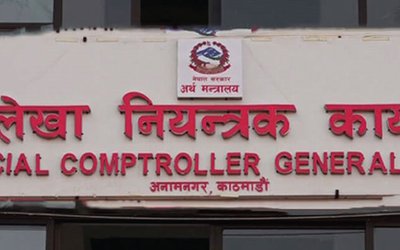The recent (Global Financial Crisis) GFC has highlighted the necessity of a stable financial system for a sustainable macroeconomic performance. At the Face of GFC in 2009, when Nepali Banks were dangerously exposed to inflated Real Estate and equity markets, NRB needed assistance to identify the then current position of financial system and assess risks. Thanks to technical help and knowledge transfer from the State Bank of Pakistan and assistance from the World Bank, NRB got a simplified version of a more complex IMF model for this purpose.
The Nepal Rastra Bank (NRB) has made Stress Testing, using the reduced model, mandatory for all “A” class financial institutions from third quarter of the previous fiscal year. The stress test carried out at the end of third quarter of the previous fiscal year across all the Commercial Banks, was scenarios based on hypothetical test and comprised three straight tests i) Credit Risk Stress Test ii) Market Risk Stress Test and iii) Liquidity Risk Stress Test.
Though the reduced model has its own merit and is a good starting point, it misses out on a few key things.
Being a scenarios based hypothetical test, the stress testing model does not account for spillovers and possible spiral infections across credit risk, market risk and liquidity risk rather it is of the classical type “Assuming everything else remaining constant, what happens when a certain hypothetical scenarios occur”. This might not be how the system reacts in actual situation where there is high correlation between various parameters. A more realistic model would be something that uses a Monte-Carlo simulation (as specified in the IMF model) or some type of simulation using probability measures.
The model has an individualistic approach and limits risk assessment to individual Financial Institution. This disguises the underlying systemic risk and gives a virtual comfort zone to the risk managers. For example, a bank’s exposure to inter-bank market for a single institution might be small but it would magnify considerably if aggregated through the system and could possibly cause a liquidity crunch.
With the aggregation bit missing, the model here has an underlying assumption that Non-banking financial institutions do not possess a Systemic threat to the financial system. This might be a gravely wrong assumption and would wrongly cover up the vulnerability of financial system if Non-Banking financial institutions have a considerable exposure. A significant example would be Commodity Futures Exchanges and CFD trades carried out there. Without a clear government policy and prudential regulation here, and considering the volume of trades and transaction amounts, the financial system might be having a greater risk exposure than estimated.
Through the monetary policy for this fiscal year, NRB has shown interest in modernization and expansion of technological resources in the risk monitoring domain. An important tool for NRB to include in its arsenal of regulator methods and indices could be a more comprehensive Stress Testing Model to use by NRB to conduct Stress testing of the aggregate financial system. An aggregate model would be an accountable step towards Financial Technological modernization of Nepalese financial sector, help to fill up the gaps the existing reduced model has and would help NRB to better manage and achieve its monetary policy goals.
Analyst, Money Zone Pty Ltd, Australia, with MS in Financial Engineering, New York University (running)
- TANAHU HYDROPOWER PROEJCT: A Significant Achievement
- Apr 15, 2024
- AMBASSADOR HANAN GODAR: Sharing Pain With A Nepali Family
- Mar 30, 2024
- VISIT OF KfW AND EIB TO NEPAL : Mission Matters
- Mar 25, 2024
- NEPAL BRITAIN SOCIETY: Pratima Pande's Leadership
- Mar 24, 2024
- NEPAL ARMY DAY: Time To Recall Glory
- Mar 15, 2024
















